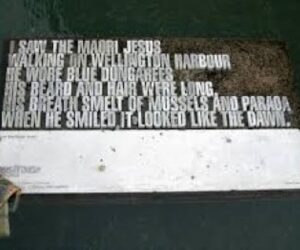
Resource Pack for: No Ordinary Sun, by Hone Tuwhare
Created by Rachel Holland
Context
Hone Tuwhare is a seminal New Zealand poet, whose works spanned generations and covered ideas topics from Māori-Pakeha relations to the state of New Zealand as a post-colonial environment. What defines much of Tuwhare’s work is the relationship between humankind and nature, which under matauranga Māori is less of a symbiosis, and more requiring awe and the acceptance that we as humans are guardians of something much larger and more complex than ourselves and our own understanding.
Founded in whakapapa, kaitiakitanga determines that there are no boundaries between man and nature, and instead that the free-flowing harmonious relationships necessitates responsibility, on part of man, to protect it at all costs. The benefits to this relationship are incalculable, and the concept of acting for the benefit of all, rather than just the individual, is a central guiding principle.
No Ordinary Sun was published in Northland in 1959, but subsequently reprinted in Te Ao Hou (1959) and as the titular poem for his debut collection of poetry in 1964. As a political poet at his core, Tuwhare’s work should always be considered in the wider New Zealand sociopolitcal, and even historical landscape, to find the messages at the core of each poem. No Ordinary Sun was written almost immediately following the nuclear testing at Bikini Atoll and neighbouring islands, as part of the United States’ Manhattan Project from 1946 to 1958.
Obviously a poem with a nuclear bomb at its core and written in the 1950s will no doubt be crafted with the bombings of Hiroshima and Nagasaki on its mind: these events changed the global landscape, and introduced a level of destruction and devastation never seen before. What brings the poem closer to home is the plethora of nuclear tests not only undertaken in the Pacific Islands, but forcing the residents of New Zealand’s extended whanau to relocate, leaving everything behind.
In order for students to grasp the significance of these nuclear tests, and the sheer magnitude of nuclear bombs as a weapon, videos and film are invaluable. Students are surprisingly detached from the events which occurred less than a century ago, so reconnecting them with recent history is essential in order to bring emotional weight to the reading of the poem. Actual videos from the Manhattan Project tests at Bikini Atoll are available online, however, productions documenting the immediate and long-term impacts of the bombings of Hiroshima and Nagasaki are just as useful in expressing the destruction to every part of normal human life which these bombs brought, and could bring.






